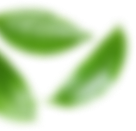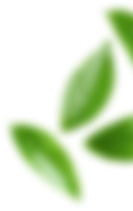Bad Food for Kidney: What Foods Help Repair Kidneys and Liver
Keeping the liver and kidneys healthy is a key to good health. Both the organs are responsible for cleansing the body, maintaining balance in the fluids, and eliminating toxic waste. Yet, lifestyle and poor eating habits gradually make them weaker. Numerous individuals with kidney ailments, such as elevated creatinine levels or CKD, are advised to live on a stringent diet. But what to eat and what not to eat is always bewildering.
In this detailed guide, we’ll explore bad food for kidney, foods that help repair kidneys and liver, a 7 day meal plan for kidney disease, and the 10 best foods for kidney disease. We’ll also cover fruits good for the kidney and liver and share easy tips on how to keep the kidney healthy & strong.
Why Diet Matters for Kidney and Liver Health
The kidneys filter the blood, balance the electrolytes, and eliminate toxins via urine. The liver metabolizes nutrients, detoxifies substances, and synthesizes proteins required for digestion. If either organ is under stress by poor dietary habits, the whole body is affected.
For those with kidney disease, small diet errors can raise creatinine levels, lead to water retention, or impair kidney function. That’s why knowing foods that can enhance kidney function and foods that shouldn’t be consumed is the beginning of a healthier lifestyle.
Ten Foods Bad for Kidneys
Below are ten foods bad for kidneys that everyone with kidney issues should limit or avoid:
- Processed Meats: Sausages, bacon, and ham have high sodium and preservatives that burden the kidneys.
- Salty Snacks: Chips, crackers, and instant noodles increase blood pressure, damaging kidney function.
- Canned Foods: Canned soups, beans, and sauces contain excess salt that maximizes fluid retention.
- Red Meat: Excessive protein from beef or pork can increase poor food for kidney creatinine levels.
- Fried Foods : Oily fried foods raise cholesterol and inflammation, affecting kidney health.
- Soda and soft drinks: Soda phosphate and artificial sweeteners harm the kidney function.
- Dairy products (more): Excess milk or cheese causes calcium buildup and kidney stones.
- Pickles & Preserved Foods : Excessive sodium increases kidney strain.
- Fast Food Burgers & Pizza : Sodium, unhealthy fats, and phosphorus are abundant.
- Bananas (for CKD patients): When nutritious under normal conditions, bananas contain high amounts of potassium that are unable to effectively filter kidney advanced kidney disease.
These ten bad foods for kidneys must be substituted with more recovery-friendly alternatives.
What Are the 10 Best Foods for Kidney Disease?
On the bright side, the right foods can aid kidney repair and minimize complications. So, what are the 10 best foods for kidney disease?
- Apples : High in fiber, reduces cholesterol, and guards kidneys.
- Blueberries : Full of antioxidants to minimize inflammation.
- Cauliflower : Low-potassium vegetable that promotes kidney function.
- Red Grapes : Enhances blood flow and minimizes kidney stress.
- Garlic : Natural detoxifying and anti-inflammatory agent.
- Cabbage : High in vitamins and soft to digest.
- Fish (Salmon, Tuna, Mackerel) : Contains omega-3 fatty acids that protect kidneys.
- Strawberries : Free radical-fighting antioxidants.
- Olive Oil : Inflammation-lowering healthy fat.
- Cranberries : Guard against urinary tract infections, further protecting the kidneys.
These are not only the best food for kidney patients but also increase immunity and digestion as a whole.
Fruits Good for Kidney and Liver
When it comes to fruits good for kidney and liver, prioritize those that are high in antioxidants, low in potassium, and water-rich:
Apples : Support liver detox and kidney cleaning.
Berries (blueberries, strawberries, raspberries) : Vitamin C and antioxidants rich.
Papaya : Liver enzyme supportive and kidney-friendly.
Pineapple : Anti-inflammatory, can be taken by patients with kidneys (low potassium).
Grapes : Reduce oxidative stress on both organs.
Watermelon : Hydrates the body and removes toxins.
All these fruits enhance digestion, lower toxin burden, and increase energy without any danger to kidney patients.
Get Meal Plan for 7 Days to Keep your Kidney Healthy
If you’re wondering how to put these foods into a balanced diet, here’s a 7 day meal plan for kidney disease (low sodium, low phosphorus, and kidney-friendly.
Day 1
Breakfast: Oatmeal with blueberries
Lunch: Grilled chicken with steamed cauliflower
Dinner: Baked fish with cabbage and olive oil dressing
Day 2
Breakfast: Apple slices with toast
Lunch: Rice with garlic sautéed green beans
Dinner: Grilled salmon with boiled carrots
Day 3
Breakfast: Papaya cubes with plain porridge
Lunch: Cabbage soup with bread
Dinner: Baked potatoes with olive oil and garlic
Day 4
Breakfast: Pineapple slices with rice cakes
Lunch: Cauliflower stir-fry with rice
Dinner: Grilled tuna with red grapes
Day 5
Breakfast: Watermelon bowl with oats
Lunch: Rice with boiled cabbage and chicken
Dinner: Olive oil pasta with garlic and parsley
Day 6
Breakfast: Apple smoothie (no dairy)
Lunch: Steamed vegetables with brown rice
Dinner: Fish curry with cauliflower
Day 7 of kidney meal plan
Breakfast: Toast with strawberries
Lunch: Rice with garlic sautéed beans
Dinner: Grape salad with grilled fish
This 7 day diet plan for kidney disease prevents damaging foods and incorporates foods to enhance kidney function naturally.
Importance of Kidney and Liver Health
- Kidneys filter out waste and excess water, maintaining the body in balance.
- They control blood pressure, red blood cell production, and minerals.
- Healthy kidneys keep toxins from building up and preserve energy levels.
- Liver removes toxins from food, alcohol and medicines.
- It stores glucose for energy, vitamins and minerals.
- The liver facilitates digestion through bile production.
- Healthy kidneys and liver function together to eliminate toxins.
- Keeping them safe provides long -term energy, immunity and normal body strength.
Foods to improve Kidney Function
To strengthen the kidney, add:
Leafy greens (medium): Spinach and kale provide vitamins.
Legumes (minimum): lentils and beans for plant-based protein.
Whole grains : Brown rice, barley, and oats for energy.
Omega -3 foods: walnuts for salmon, chia seeds, and anti -integrity.
Garlic and onions : For detox support.
These kidney-support foods also support the liver through reduced toxin build-up.
What Foods Repair Kidneys and Liver?
If you want to know what foods repair kidneys and liver, the secret is to consume anti-inflammatory, antioxidant, and toxin-cleansing foods:
Green leafy vegetables (moderate for CKD patients)
Turmeric : Curcumin reduces inflammation
Cranberries : Shields the urinary tract and kidneys
Apples & citrus fruits : Removes toxins
Olive oil & avocado : Good fats for repairing cells
Beetroot : Boosts liver enzymes and circulation
Pumpkin : Friendly for kidneys and helps digest
All these foods together work like natural medicine, allowing the body to heal from stress and injury.
How to Keep Kidney Healthy & Strong
Prevention is better than cure. Here are some simple tips on how to maintain kidney healthy & strong:
- Drink lots of water : Drink water regularly to flush out toxins.
- Use less salt : Use less processed and packaged foods.
- Eat nutritious meals : Eat a kidney-friendly diet.
- Do regular exercise : Keep your body weight normal.
- Do not smoke and drink alcohol : Both harm the kidneys and liver.
- Manage blood sugar and blood pressure : Critical for kidney function.
- Visit your doctor for regular checkups : Early kidney problem detection saves lives.
Precautions for Kidney Patients
Kidney patients must be careful in taking precautions to safeguard their health. The first precaution is to observe a kidney-friendly diet, which means cutting down on salt, processed foods, and high protein intake. Adequate water intake is essential, but it must be as directed by the doctor, if fluid restriction is required.
Patients must also eschew bad food for kidney health, such as junk food, fried foods, and food rich in potassium or phosphorus content, except on prescription. Periodic checks on creatinine values and blood pressure are essential to monitor kidney function. Medication has to be consumed regularly without missing any dose. Above all, kidney patients must refrain from self-medication and refer to their doctor for any changes in lifestyle or diet.
Final Thoughts
Kidney and liver function relies heavily on diet and lifestyle. By steering away from bad food for kidney creatinine and trying to eat what food nourishes kidneys and liver, you can naturally help these important organs. A 7 day diet plan for kidney disease with fruits which are beneficial for kidney and liver will not only keep your health safe but also enhance your energy level and overall wellness.
When someone asks what are the top 10 foods for kidney disease, the response is simple: low-sodium, nutrient-rich, and antioxidant-dense foods. Prevention is the best medicine. Eat smart, hydrate, and follow simple ways on how to maintain your kidneys strong & healthy to live a healthier lifestyle.
Worst foods for the kidneys?
Processed foods, salty snacks, sodas, fried foods, and too much dairy are the worst for the kidneys.
What fruits are ideal for kidney patients?
Apples, berries, grapes, papaya, and pineapple are ideal fruits for kidney patients.
Can kidneys heal with diet?
Yes, during initial phases, dietary adjustments with foodstuff to enhance kidney function can support kidney recovery.
What are 10 best foods for kidney disease?
Apples, blueberries, cauliflower, garlic, cabbage, red grapes, cranberries, olive oil, strawberries, and fatty fish.
How to maintain the kidney healthy & robust naturally?
Drink water, follow a low-salt diet, exercise, don’t smoke, and consume antioxidant foods.


